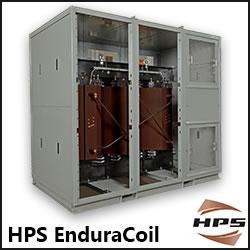NREL Finds Nanotube Semiconductors Well-suited for PV Systems
The research builds on the Nobel Prize-winning work of Rudolph Marcus, who developed a fundamental tenet of physical chemistry that explains the rate at which an electron can move from one chemical to another.
Researchers at the Energy Department's National Renewable Energy Laboratory (NREL) discovered single-walled carbon nanotube semiconductors could be favorable for photovoltaic systems because they can potentially convert sunlight to electricity or fuels without losing much energy.
In organic PV devices, after a photon is absorbed, charges (electrons and holes) generally need to be separated across an interface so that they can live long enough to be collected as electrical current. The electron transfer event that produces these separated charges comes with a potential energy loss as the molecules involved have to structurally reorganize their bonds. This loss is called reorganization energy, but NREL researchers found little energy was lost when pairing SWCNT semiconductors with fullerene molecules.
"What we find in our study is this particular system -- nanotubes with fullerenes -- have an exceptionally low reorganization energy and the nanotubes themselves probably have very, very low reorganization energy," said Jeffrey Blackburn, a senior scientist at NREL and co-author of the paper "Tuning the driving force for exciton dissociation in single-walled carbon nanotube heterojunctions."
The paper appears in the new issue of the journal Nature Chemistry. Its other co-authors are Rachelle Ihly, Kevin Mistry, Andrew Ferguson, Obadiah Reid, and Garry Rumbles from NREL, and Olga Boltalina, Tyler Clikeman, Bryon Larson, and Steven Strauss from Colorado State University.
Organic PV devices involve an interface between a donor and an acceptor. In this case, the SWCNT served as the donor, as it donated an electron to the acceptor (here, the fullerene). The NREL researchers strategically partnered with colleagues at Colorado State University to take advantage of expertise at each institution in producing donors and acceptors with well-defined and highly tunable energy levels: semiconducting SWCNT donors at NREL and fullerene acceptors at CSU. This partnership enabled NREL's scientists to determine that the electron transfer event didn't come with a large energy loss associated with reorganization, meaning solar energy can be harvested more efficiently. For this reason, SWCNT semiconductors could be favorable for PV applications.
Funds for the research came from the Energy Department's Office of Science.
NREL is the U.S. Department of Energy's primary national laboratory for renewable energy and energy efficiency research and development. NREL is operated for the Energy Department by The Alliance for Sustainable Energy, LLC.
###
Visit NREL online at www.nrel.gov
Featured Product

HPS EnduraCoilTM Cast Resin Medium Voltage Transformer
HPS EnduraCoil is a high-performance cast resin transformer designed for many demanding and diverse applications while minimizing both installation and maintenance costs. Coils are formed with mineral-filled epoxy, reinforced with fiberglass and cast to provide complete void-free resin impregnation throughout the entire insulation system. HPS EnduraCoil complies with the new NRCan 2019 and DOE 2016 efficiency regulations and is approved by both UL and CSA standards. It is also seismic qualified per IBC 2012/ASCE 7-10/CBC 2013. Cast resin transformers are self-extinguishing in the unlikely event of fire, environmentally friendly and offer greater resistance to short circuits. HPS also offers wide range of accessories for transformer protection and monitoring requirements.
